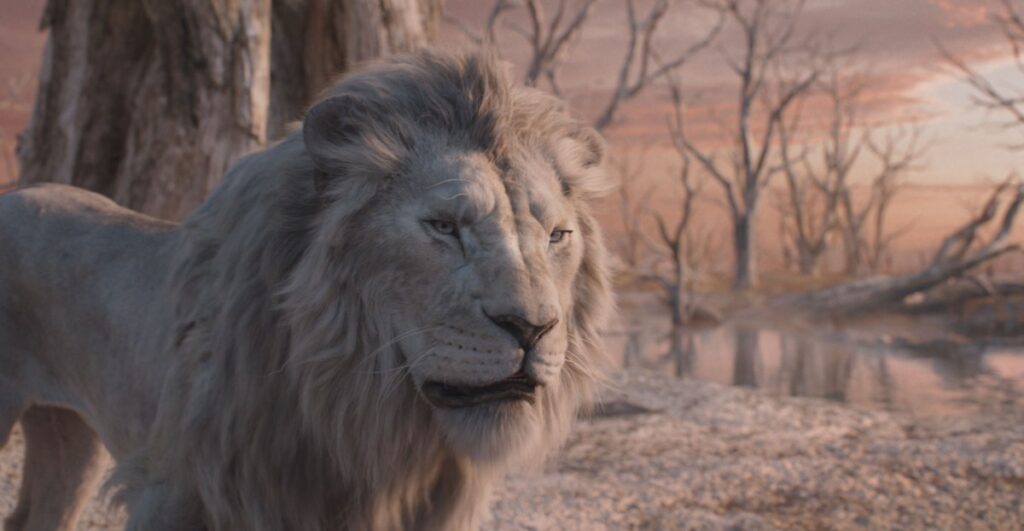Every day, Disney strays further from the wishing star’s light. And there’s one big reason for that: a staggering lack of animated villains. The studio has only produced a handful of movies with actual villains over the last 15 years, and as Disney fans frequently note, that means we’ve lost a glorious entertainment staple in the Disney villain song. The big musical number is a vital part of most great villains’ identities — it often lets the audience see all their glorious viciousness in action. Between 2000 and 2023, Disney only gave us five villain songs, and just three of them since 2010 — “Mother Knows Best” in Tangled, “The Backson Song” in Winnie the Pooh, and “Shiny” in Moana. (“Love Is an Open Door” in Frozen is technically a duet with a villain, but it isn’t a villain song by any definition.)
But hope is not lost: The villain song is on the rise again. Disney’s Wish gave us our first true villain song in 13 years with “This Is the Thanks I Get?!” Moana 2’s fiery “Get Lost” doesn’t quite count, since Matangi reveals herself as Moana’s ally, but it’s styled and presented as a villain song. Mufasa: The Lion King also features a full villain song: “Bye Bye,” sung by Mads Mikkelsen as white lion antagonist Kiros.
Unfortunately, though, “Bye Bye” (much like “This Is the Thanks I Get?!”) is a pitiful machination of a villain number that manages to make the villain less threatening. “Bye Bye” is a solid candidate for the worst-ever villain song — a remarkable feat when the yodeling song from Home on the Range exists. It’s also a valuable reminder of how great Disney villain songs used to be.
Since the company’s first feature-film villain song, Pinocchio’s “Hi-Diddle-Dee-Dee,” providing a musical showcase for a film’s big bad has been one of the best expressions of Disney’s musical heritage. Before the Disney Renaissance (1989-1999), they were typically shorter and smaller-scale. The villains themselves didn’t even have to sing them — see the jazzy classic “Cruella De Vil,” “The Phony King of England” in Robin Hood, or The Adventures of Ichabod and Mr. Toad’s “The Headless Horseman.” They often felt like more of an afterthought than a centerpiece, though they still established all sorts of delicious villainy, like Captain Hook’s penchant for killing in Peter Pan’s “The Elegant Captain Hook” or the Queen of Hearts’ unlimited fury in “Who’s Been Painting My Roses Red?”
During the Renaissance, though, they became big, dynamically choreographed Broadway-style numbers, and a vital aspect of Disney’s animated features: Memorable examples crop up in The Little Mermaid, Beauty and the Beast, Aladdin (as a reprise), The Lion King, Pocahontas, and The Hunchback of Notre Dame.
There’s no one way to have a successful villain song, but all the great ones firmly establish antagonists’ characters and display what makes them truly diabolical. “Poor Unfortunate Souls” and “Friends on the Other Side” show how masterful Ursula and Dr. Facilier are at manipulating their prey. “Cruella De Vil” establishes how detestable Cruella is before we have the pleasure of even seeing her. “Hellfire,” perhaps the single greatest Disney villain song, is the darkest of them all, as Judge Frollo reveals the unquenchable lust for Esmeralda that’s driven him to unimaginable evil, and contrasts it with his strict, austere religious beliefs.
These songs don’t need to be dark or downtempo: Upbeat numbers like “The Headless Horseman,” Beauty and the Beast’s “Gaston,” The Sword in the Stone’s “Mad Madam Mim,” and The Great Mouse Detective’s “The World’s Greatest Criminal Mind” (which features a chorus of flunkies joyfully celebrating the idea of Ratigan drowning widows and orphans) all deliver smug portraits of cruelty.
While great villain songs help us understand what makes a villain tick, we learn virtually nothing about Kiros through “Bye Bye.” We get only the vaguest sense of his personality in the lyrics about how the moon “doesn’t obey / and neither do I.” Kiros wants vengeance against Mufasa, who killed his son. But the most menacing thing he can offer is a childish taunt: “I’m gonna be the last thing you see / before I make you go bye-bye.”
The Lion King is famously anchored by Mufasa’s tragic death, so it’s not like the audience needs to be treated with such a gentle touch. The delivery of “bye-bye” is painfully indifferent, as if even Kiros doesn’t believe in what he’s saying. And if Kiros can’t offer up his half-baked threats with any conviction, why should we believe he has any chance of killing Mufasa?
Songwriter Lin-Manuel Miranda makes the mistake of centering “Bye Bye” not on the villain, but instead on Mufasa. Nothing in the song suggests what makes Kiros himself villainous, dangerous, or unique and compelling as a character. In “Bye Bye,” it feels more like Kiros is wrapped up in an emotional moment that pushes him toward murder, rather than a character who’s proud of his schemes or his villainous roots.
The lyrics make no mention of any of Kiros’ talents: There’s no mention of his ferocious claws, musculature, or sharp, piercing teeth. The obnoxious, childish threat of making Mufasa “go bye-bye” feels more like a petulant aside than a genuine intention. Since “Bye Bye” tells us nothing about Kiros or what he’s capable of, there’s no reason to root against him, or even care about him.
Villain songs have been a vital opportunity for Disney storytellers to push the limits and breach taboo subjects: Where else could a Disney character bemoan the fact that his own sexual desires repulse him? They’ve helped Disney grow creatively, while letting audiences revel in some of the darker emotions that Disney movies usually avoid. “Bye Bye” feels especially disappointing when compared to the classic Lion King song “Be Prepared,” in which Scar reveals his plans to take down Mufasa and Simba (explicitly saying he’ll kill them) and how he’ll take control of Pride Rock, bringing his rapacious hyena followers to the promised land.
Miranda’s song feels like a spiritual successor to “Be Prepared,” yet it’s woefully lacking in spirit. The snarly “bye-bye”s seem as if they’re meant to echo Scar’s snark, but his 1994 number is full of genuine malice, as well as haunting imagery deliberately recalling Germany’s Third Reich. There’s no matching visual creativity or daring in the screen staging of “Bye Bye,” which reduces the number to a group of lions circling and jumping around.
In “Be Prepared,” we come to understand Scar’s cunning, seething hatred and manipulative charisma in equal measure. In “Bye Bye,” we get a lion shouting “bye-bye” a bunch of times. That’s all the more surprising considering that Miranda wrote a solid villain song in “Shiny,” which successfully establishes the giant crab Tamatoa’s obsessions and his menacing qualities. Communicating all that through song is particularly important, given that the number is this minor villain’s only opportunity to… er, shine. But “Bye Bye” is a pale imitation of what came before it.
It feels like Disney villain songs have become a box-ticking exercise, added more out of a sense of obligation than out of inspiration. But these numbers deserve more. They’re a huge reason why classic Disney villains are so popular and memorable. They break up the parade of protagonist I-want songs and comic relief songs, and serve as playful excursions into kid-safe nastiness in creative ways. If Disney’s songwriters aren’t interested in what makes villain songs such a wonderful part of the studio’s canon, perhaps we’re better off without them after all.


